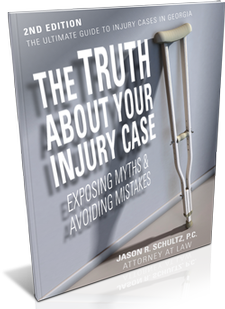Because the skyrocketing numbers of pedestrian fatalities have made the issue a high priority, several departments and agencies are working together to solve the problem, including:
- The Georgia Department of Transportation;
- The Governor’s Office of Highway Safety;
- The Georgia Department of Public Health;
- Regional commissions;
- Metropolitan planning organizations;
- Transit agencies;
- Local governments; and
- Local organizations.
Pedestrian Statistics in Georgia
According to the PSAP, 90 percent of Georgians walk somewhere at least one time a week, and all but five percent would like to be able to walk more. Most of us regularly run our errands, access transit, or get to work or school by walking. Unfortunately, the walking infrastructure is not safe in 44 percent of our communities. The good news is that more than 90 percent of us are in favor of increased funding to improve safety for pedestrians.
Sixty-eight percent of people approve of increasing the funding for measures that would reduce traffic congestion. This statistic lines up with the fact that 61 percent feel driver behavior is the number-one factor they fear while walking. The biggest threats to pedestrians are often distracted drivers and speeding motorists.
Pedestrians Are at High Risk of Injuries in an Accident
It should come as no surprise that a person on foot is at risk of suffering severe injuries in a crash. According to the PSAP, nearly 80 percent of pedestrian accidents caused injuries, while 5 percent were fatal.
Unfortunately, these statistics do not distinguish between a minor injury, like a bruise, and major damage, like a complete spinal cord injury. We cannot compare the severity of the injuries, but we can see the difference in percentages of injuries between pedestrians and people in vehicles.
Out of 100 pedestrian crashes, only 20 people will escape unharmed. By comparison, car accidents are fatal for less than 1 percent of drivers. Only 32 drivers out of 100 will suffer injuries, while 67 will walk away without a scratch.
Some demographics are more at risk for pedestrian accidents than others. Men, for example, make up 70 percent of pedestrian fatalities each year.
What Is the Plan to Reduce Pedestrian Fatalities?
The PSAP contains these 11 strategies and action items:
- Gather, map, and distribute information on pedestrian safety, crashes, risks, and walking environments;
- Make sure that state transportation plans, policies, and design guides put these strategies to use;
- Expand pedestrian safety strategies and measures to regional and local planning agencies;
- Incorporate safety measures into state road construction and maintenance projects;
- Locate “hot spots” on state roads and prioritize taking action in those locations;
- Identify and fix safety problems throughout the state;
- Educate the public about pedestrian safety;
- Train law enforcement officers, transportation and public health workers, elected officials, and members of community organizations on pedestrian safety each year;
- Continue to increase education, outreach, and collaboration on state, regional, and local levels;
- Earmark funding for pedestrian safety projects; and
- Make sure the funding gets spent responsibly.
The partners in the PSAP will keep track of progress toward the state’s goals on an ongoing basis every year. They will also continue to collect data on the outcome of this work.


